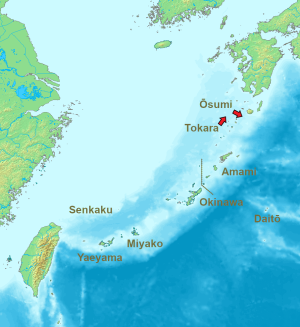The Japanese Ministry of Defense announced on November 2 that a Chinese naval survey vessel entered Japan’s territorial waters in the early hours of the same day. It was the fourth time that a People’s Liberation Army Navy (PLAN) vessel had intruded into Japan’s waters this year, a record high.
It also marked the eighth time that a Chinese navy ship intruded into Japan’s waters. The first such case, in 2004, saw a PLAN Han-class nuclear-powered attack submarine entered the waters off Ishigaki Island in Okinawa Prefecture. But the pace has picked up rapidly in the past year. Five of the eight intrusions into Japan’s territorial waters by Chinese warships have occurred since the Kishida administration was inaugurated in October 2021.
The Japanese government conveyed its concern over the latest incident to the Chinese side through diplomatic channels, Chief Cabinet Secretary Matsuno Hirokazu said at a press conference on November 2.
According to the defense ministry, the Japan Maritime Self-Defense Force (JMSDF) confirmed that a PLAN Shupan-class survey ship crossed into Japanese territorial waters southwest of Kuchinoerabu Island in Kagoshima Prefecture around 12:10 a.m. Tokyo time on November 2, and that it sailed there for about three hours before exiting the area at a point south of Yakushima, also in Kagoshima.
Including all four intrusions this year, five of the past eight intrusions into territorial waters by Chinese warships have taken place in the same area: the Tokara Strait in Kagoshima. The strait is located in a Japanese island chain that divides the East China Sea and the Pacific Ocean. It is noted that the strait contains waters that reach depths of more than 1,000 meters, and many military experts in Tokyo believe that the Chinese navy is investigating navigation routes for its submarines.
It is true that the United Nations Convention on the Law of the Sea (UNCLOS) grants all foreign ships, including warships, the right of innocent passage through the territorial waters of other countries, as long as it is not prejudicial to the peace, good order, or security of coastal states.
However, in addition to proscribing any threat or use of force, UNCLOS clearly states that activities aimed at collecting information considered to be prejudicial to the defense or security of coastal states, as well as research or survey activities, do not fall under innocent passage. If so, isn’t the continuous intrusion of Chinese naval survey ships into Japanese territorial waters a violation of international law?
In June 2016, when a PLAN intelligence-gathering ship intruded into the territorial waters off Kuchinoerabu Island for the first time, the Japanese government was forced to analyze whether the PLAN vessel was simply conducting innocent passage, meaning in this case that the ship was not collecting intelligence. Then-Japanese Defense Minister Nakatani Gen said at the time, “It cannot be said that it was innocent passage.”
China, however, claimed that the ship’s move was in accordance with UNCLOS, given that “Japan’s Tokara Strait is a territorial strait used for international navigation.” Beijing stressed it has the “right of transit passage through international straits,” which restricts coastal states’ exercise of jurisdiction.
“Japan’s consent is not necessary,” given the strait fits the definition of straits used for international navigation, Chinese Foreign Ministry spokesperson Hua Chunying said at a press conference. She went to say, “There is no such thing as an ‘intrusion’ situation. (Japan) should study international law first.” China’s position that the “right of transit passage” differs from the “right of innocent passage” continues to this day.
Nakatani responded by saying Japan has never recognized the Tokara Strait as an international strait for international navigation. On top of that, he added, “Normally, when a warship enters territorial waters, there should be prior contact and notification.”
Amid a strong conflict of the two nations’ claims, China has never stopped intruding into Japan’s territorial waters. For Tokyo, this is the same situation as Beijing’s ongoing exploration of offshore gas fields in the East China Sea, which Japan says represents yet another attempt to unilaterally change the status quo.
In recent years, China has stepped up its maritime advances in the East and South China Seas, including the Senkaku/Diaoyu Islands, which are disputed by Japan and China. Since the beginning of this year, Beijing has even claimed to the international community that the Taiwan Strait, which spans between mainland China and the main island of Taiwan, is not international waters – an apparent move to turn the Taiwan Strait into an inland sea of China.
In response, the United States has said that “China is making excuses to prevent the free navigation of U.S. warships,” and strongly insisted that it would “navigate anywhere permitted by international law, including the Taiwan Strait.”

































